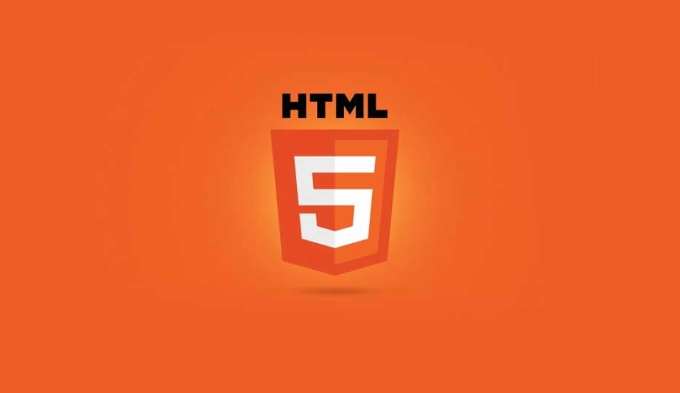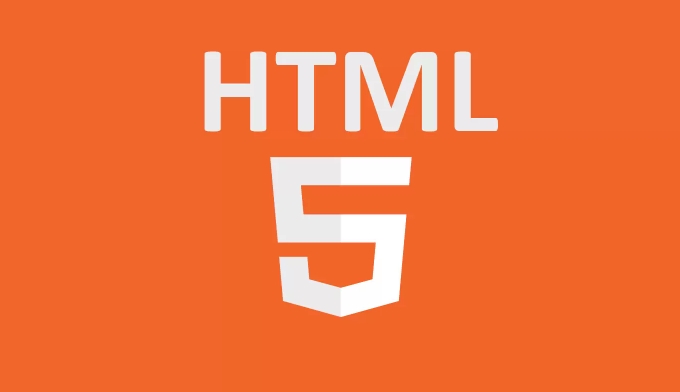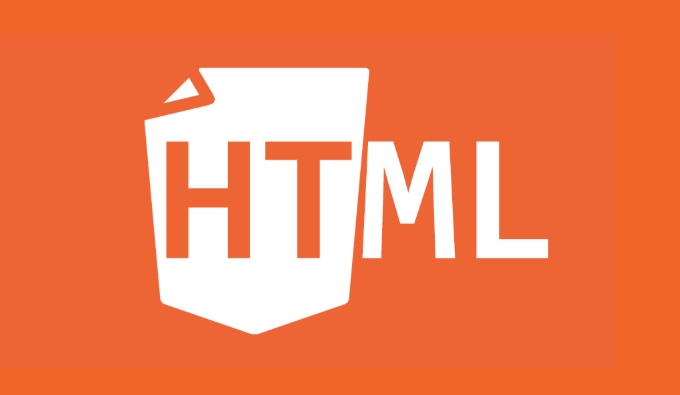To build a real-time H5 dashboard, first select a lightweight chart library such as Chart.js, ApexCharts or ECharts Lite; secondly use WebSockets to achieve real-time data connection; then optimize the mobile and low-bandwidth scenario experience; finally deploy and handle edge cases reasonably. 1. Select a lightweight chart library that supports dynamic updates to ensure performance; 2. Use WebSockets to implement real-time data push from the server to the client; 3. Compress data, limit the number of data points and optimize the redraw frequency to suit mobile devices; 4. Static hosting to platforms such as GitHub Pages or Netlify and solve CORS problems.

If you're looking to build an H5 dashboard with real-time charts, the good news is that it's totally doable without needing a ton of backend infrastructure. The key lies in choosing the right tools and structuring your frontend logic efficiently. Let's dive into how you can make this happen.

Choose Lightweight Chart Libraries for H5
When building dashboards for H5 (HTML5) pages, especially ones that need to run smoothly on mobile or low-end devices, performance matters. You don't want to overload the browser with heavy charting libraries.
Some solid options include:

- Chart.js – Simple, lightweight, support animations and dynamic updates
- ApexCharts – More feature-rich but still performs well in real-time scenarios
- ECharts (lite version) – If you're OK with slightly more weight for advanced visuals
These libraries all support updating datasets dynamically, which is essential for real-time display.
A quick tip: Use requestAnimationFrame or throttling when redrawing charts frequently to avoid layout thrashing.

Connect Real-time Data with WebSockets
Real-time means data needs to flow continuously from your server (or data source) to the client. HTTP polling works, but it's inefficient. A better approach is using WebSockets .
Here's how it generally works:
- Your H5 page opens a WebSocket connection to a backend service
- The backend pushes new data points as they come in
- JavaScript receives these messages and updates the chart accordingly
For example, if you're tracking live temperature readings:
const ws = new WebSocket('wss://your-data-stream.com');
ws.onmessage = function(event) {
const data = JSON.parse(event.data);
chart.data.labels.push(data.timestamp);
chart.data.datasets[0].data.push(data.temperature);
chart.update();
};Make sure to limit the number of data points retained so memory doesn't balloon over time.
Optimize for Mobile and Low-bandwidth Scenarios
H5 dashboards often run in browsers on mobile devices or in environments with unstable connections. Here are a few optimizations to keep things smooth:
- Trim incoming data to only what's needed (eg, send every 2nd or 5th data point)
- Throttle chart redraws – not every update needs a full render
- Compress data payloads using binary formats like MessagePack if possible
- Fallback gracefully when WebSocket disconnects – retry logic helps
Also, use responsive design principles. Charts should scale down cleanly on smaller screens, and touch interactions should feel natural.
Hosting and Deployment Tips
Once your dashboard is built, deploying it shouldn't be a pain. Since it's an H5 page, you can host it anywhere static files are supported:
- GitHub Pages
- Netlify
- Vercel
- Even basic Apache/Nginx setups
Just make sure your WebSocket backend is reachable from wherever the dashboard is served. CORS issues are common here, so double-check headers and origins.
And if you're embedding the dashboard in another app or website, consider wrapping it in an iframe for easier integration.
That's about it. Building a real-time H5 dashboard isn't overly complex once you've got the right stack in place. It's mostly about keeping things lean, connecting data streams properly, and handling edge cases like disconnections or slow clients.
The above is the detailed content of Building H5 Dashboards with Real-time Charts. For more information, please follow other related articles on the PHP Chinese website!

Hot AI Tools

Undress AI Tool
Undress images for free

Undresser.AI Undress
AI-powered app for creating realistic nude photos

AI Clothes Remover
Online AI tool for removing clothes from photos.

Clothoff.io
AI clothes remover

Video Face Swap
Swap faces in any video effortlessly with our completely free AI face swap tool!

Hot Article

Hot Tools

Notepad++7.3.1
Easy-to-use and free code editor

SublimeText3 Chinese version
Chinese version, very easy to use

Zend Studio 13.0.1
Powerful PHP integrated development environment

Dreamweaver CS6
Visual web development tools

SublimeText3 Mac version
God-level code editing software (SublimeText3)
 Using ARIA attributes with HTML5 semantic elements for accessibility
Jul 07, 2025 am 02:54 AM
Using ARIA attributes with HTML5 semantic elements for accessibility
Jul 07, 2025 am 02:54 AM
The reason why ARIA and HTML5 semantic tags are needed is that although HTML5 semantic elements have accessibility meanings, ARIA can supplement semantics and enhance auxiliary technology recognition capabilities. For example, when legacy browsers lack support, components without native tags (such as modal boxes), and state updates need to be dynamically updated, ARIA provides finer granular control. HTML5 elements such as nav, main, aside correspond to ARIArole by default, and do not need to be added manually unless the default behavior needs to be overridden. The situations where ARIA should be added include: 1. Supplement the missing status information, such as using aria-expanded to represent the button expansion/collapse status; 2. Add semantic roles to non-semantic tags, such as using div role to implement tabs and match them
 Integrating CSS and JavaScript effectively with HTML5 structure.
Jul 12, 2025 am 03:01 AM
Integrating CSS and JavaScript effectively with HTML5 structure.
Jul 12, 2025 am 03:01 AM
HTML5, CSS and JavaScript should be efficiently combined with semantic tags, reasonable loading order and decoupling design. 1. Use HTML5 semantic tags, such as improving structural clarity and maintainability, which is conducive to SEO and barrier-free access; 2. CSS should be placed in, use external files and split by module to avoid inline styles and delayed loading problems; 3. JavaScript is recommended to be introduced in front, and use defer or async to load asynchronously to avoid blocking rendering; 4. Reduce strong dependence between the three, drive behavior through data-* attributes and class name control status, and improve collaboration efficiency through unified naming specifications. These methods can effectively optimize page performance and collaborate with teams.
 HTML5 video not playing in Chrome
Jul 10, 2025 am 11:20 AM
HTML5 video not playing in Chrome
Jul 10, 2025 am 11:20 AM
Common reasons why HTML5 videos don't play in Chrome include format compatibility, autoplay policy, path or MIME type errors, and browser extension interference. 1. Videos should be given priority to using MP4 (H.264) format, or provide multiple tags to adapt to different browsers; 2. Automatic playback requires adding muted attributes or triggering .play() with JavaScript after user interaction; 3. Check whether the file path is correct and ensure that the server is configured with the correct MIME type. Local testing is recommended to use a development server; 4. Ad blocking plug-in or privacy mode may prevent loading, so you can try to disable the plug-in, replace the traceless window or update the browser version to solve the problem.
 Embedding video content using the HTML5 `` tag.
Jul 07, 2025 am 02:47 AM
Embedding video content using the HTML5 `` tag.
Jul 07, 2025 am 02:47 AM
Embed web videos using HTML5 tags, supports multi-format compatibility, custom controls and responsive design. 1. Basic usage: add tags and set src and controls attributes to realize playback functions; 2. Support multi-formats: introduce different formats such as MP4, WebM, Ogg, etc. through tags to improve browser compatibility; 3. Custom appearance and behavior: hide default controls and implement style adjustment and interactive logic through CSS and JavaScript; 4. Pay attention to details: Set muted and autoplay to achieve automatic playback, use preload to control loading strategies, combine width and max-width to achieve responsive layout, and use add subtitles to enhance accessibility.
 Using HTML5 Semantic Elements for Page Structure
Jul 07, 2025 am 02:53 AM
Using HTML5 Semantic Elements for Page Structure
Jul 07, 2025 am 02:53 AM
Using HTML5 semantic tags can improve web structure clarity, accessibility and SEO effects. 1. Semantic tags such as,,,, and make it easier for the machine to understand the page content; 2. Each tag has a clear purpose: used in the top area, wrap navigation links, include core content, display independent articles, group relevant content, place sidebars, and display bottom information; 3. Avoid abuse when using it, ensure that only one per page, avoid excessive nesting, reasonable use and in blocks. Mastering these key points can make the web page structure more standardized and practical.
 Explaining the HTML5 `` vs `` elements.
Jul 12, 2025 am 03:09 AM
Explaining the HTML5 `` vs `` elements.
Jul 12, 2025 am 03:09 AM
It is a block-level element, suitable for layout; it is an inline element, suitable for wrapping text content. 1. Exclusively occupy a line, width, height and margins can be set, which are often used in structural layout; 2. No line breaks, the size is determined by the content, and is suitable for local text styles or dynamic operations; 3. When choosing, it should be judged based on whether the content needs independent space; 4. It cannot be nested and is not suitable for layout; 5. Priority is given to the use of semantic labels to improve structural clarity and accessibility.
 Accessing User Location with HTML5 Geolocation API
Jul 07, 2025 am 02:49 AM
Accessing User Location with HTML5 Geolocation API
Jul 07, 2025 am 02:49 AM
To obtain user location information, you must first obtain authorization. When using HTML5's GeolocationAPI, the first step is to request user permission. If the user refuses or fails to respond, an error should be handled and a prompt should be given; after successful authorization, the Position object includes coords (latitude, longitude, etc.) and timestamp; you can use watchPosition to monitor location changes, but you need to pay attention to performance issues and clear the listener in time. 1. Authorization requires the user to explicitly allow it to trigger the getCurrentPosition method request; 2. Process error.code when rejected or errored and prompt the user; 3. After success, position.coords provides location data; 4.watc
 Saving the content of an HTML5 canvas as an image.
Jul 08, 2025 am 02:13 AM
Saving the content of an HTML5 canvas as an image.
Jul 08, 2025 am 02:13 AM
Yes, you can save its contents as an image using the HTML5Canvas built-in toDataURL() method. First, call canvas.toDataURL ('image/png') to convert the canvas content to a base64 string in PNG format; if JPEG or WebP format is required, the corresponding type and quality parameters such as canvas.toDataURL ('image/jpeg', 0.8) can be passed in. Then you can achieve download by creating a dynamic link and triggering a click event: 1. Create an element a; 2. Set the download attribute and href as image data; 3. Call the click() method. Note that this operation should be triggered by user interaction.






